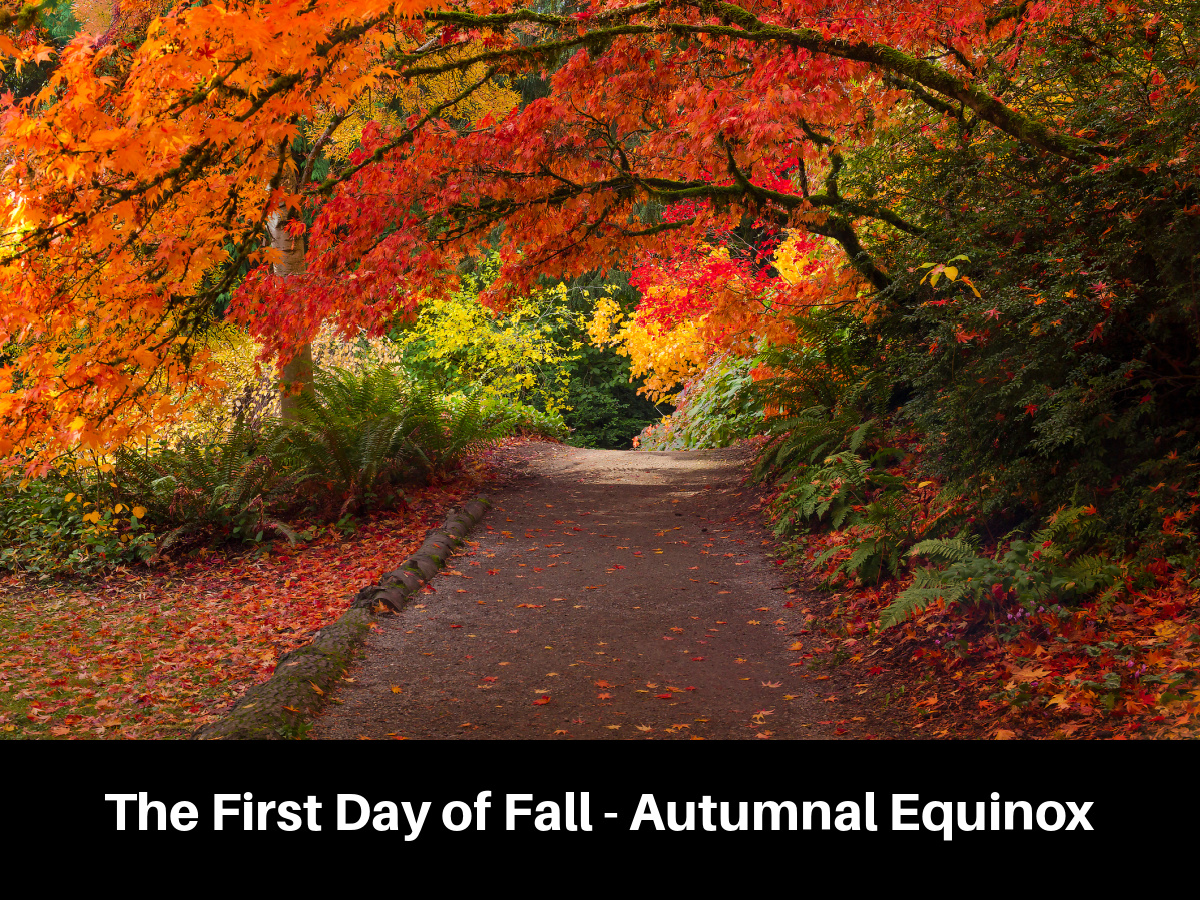The first day of fall is the transition from summer and the start of many things. While many may see it as an excuse to drink pumpkin spice lattes and go on hayrides, there is a scientific reason that we celebrate the beginning of fall each September.

What Is An Equinox?
An equinox is both celestial coordinates and the moment when the sun crosses the earth’s equator. The coordinates refer to the two places of the celestial sphere’s ecliptic that intersect with the celestial equator.
However, what we are referring to today is the moment the sun crosses the Earth’s equator, which happens twice a year.
Autumnal Equinox and the First Day of Fall
An autumnal equinox is the first day of fall. It is an astronomical event during which the sun crosses the earth’s equator to mark the end of summer.
When this happens, the days are shorter, but not as short as they are in the winter. The autumnal equinox happens at different times for half of the earth than it does for the other half.
When Is Autumnal Equinox?
The autumnal equinox is the event during which the beginning of autumn occurs. The end of fall is the winter solstice when winter begins. The dates may vary depending on the time zone you are in.
| Year | Northern Hemisphere Date | Southern Hemisphere Date |
| 2023 | September 23 | March 20 |
| 2024 | September 22 | March 20 |
| 2025 | September 22 | March 20 |
| 2026 | September 23 | March 20 |
| 2027 | September 23 | March 20 |
| 2028 | September 22 | March 20 |
What Happens On Autumnal Equinox?
The autumnal equinox may sound scientifically complex. But there are only a few changes on this day each year.
Harvest Moon
The full moon that occurs on the night closest to the autumnal equinox is the harvest moon. This is because the full moon appears at sunset during this time, giving farmers extra time to do their daily chores before winter.
Weather Change
The weather during autumn is different depending on where you live. But the autumnal equinox typically refers to the September change in weather due to 88-90% of people living in the northern hemisphere.
Color Change
The fall equinox directly affects the color of the leaves. When the equinox appears, the days are shorter than they were in the summer, which gives the trees less sunlight. This changes the color of the leaves.
Equal Night and Day
The equinox leaves us with more equal days and nights than the rest of the year. So during this time, the sun is above the horizon for twelve hours and below it for twelve hours.
When Is The First Day Of Fall?
The first day of fall is September 22 or 23 in the northern hemisphere and March 19 or 20 in the southern hemisphere. However, this is according to one type of seasonal definition.
Astronomical
The astronomical fall season is the most common type. This is the autumnal equinox, defined by the location of the sun in the sky.
Meteorological
For meteorologists, the calendar is used to define the beginning of fall. This is on September first in the northern hemisphere and March 1 in the southern hemisphere.
They use this method as it’s easier to track weather records if the season begins on the same day each year.
Signs of Fall
- Leaves change – the leaves begin to change colors in the fall due to less sunlight and changes in photosynthesis.
- Birds migrate – in the fall, birds migrate south before coming back north in the spring to gather insects that have come out of hiding.
- Seeds fall – seeds of all kinds fall to the ground in the fall along with many leaves.
- In season produce changes – while some wild fruit may disappear, others will start flourishing.
Why Does The First Day Of Fall Change Each Year?
The first day of fall changes each year because of the leap year. The window that it can start is still quite small because leap year happens once every four years.
But it is enough to make the day change every few years, though not always on the leap year. Another reason that the first day of fall may change is because of different time zones.
If the first day of fall begins near midnight, your neighbor’s equinox may begin on a different date in the same year.
